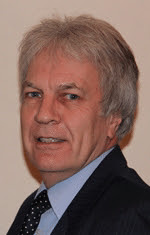The Conversation
November 29, 2023
1. Senior Lecturer in Religious Studies, The Open University
Suzanne Newcombe is honorary director of Inform - Information Network Focus on Religious Movements (www.inform.ac). Inform was established in 1988 by Professor Eileen Barker at the London School of Economics to provide up-to-date and accurate information about new and minority religious groups, often termed 'cults' and to provide a bridge between academic research and the questions of the general public. Its start-up funding was provided by the UK Home Office and Inform continues to receive project funding income from the UK government, as well as being supported by grants from charitable foundations and academic funding bodies.
The Open University provides funding as a founding partner of The Conversation UK.
We believe in the free flow of information
Republish our articles for free, online or in print, under Creative Commons licence.
No one ever sets out to join a cult.
At the beginning it looks like the group will meet some need or ideal. For most people it seems to work initially - at least somewhat.
A recent Netflix documentary showed the experiences of people in the Twin Flames Universe group, which offers online courses in finding your soulmate. For those who joined Twin Flames, it seemed that they were no longer alone. Former members say every aspect of their lives were controlled. A statement on the group’s website says these claims “distort” their “true aims and methods” and “misrepresent the autonomy of our community members.”
In general terms though, why do people leave high-demand religious groups (often called cults), and how can you help someone who’s stuck? The answer is always unique and depends on the context. Important factors to consider include the individual’s personal characteristics, the nature of the group and outside circumstances.
For some people, there is a gradual slipping away. The classic cult-like group encourages isolation from friends, family and even outside employment. But if someone does continue to engage with other activities and groups, these might reduce the appeal of an increasingly demanding group.
Some people experience a sudden change in thinking when the group crosses an ethical line or when the when the duplicity of a leader’s teaching and behaviour is realised. Sometimes a group of people leave together.
But, as the length and depth of involvement increases, leaving can become harder and harder. This is partially due to the “sunk costs” effect. If you spend your life savings on “training” and cut all your ties with your family, it becomes more difficult to start over.
Additionally, many people are both perpetrators and victims of the group’s harmful activities. Shame and social stigma does not make it any easier to leave.
So if you’re worried someone you know has joined a cult, what can you do to help?
Mind your language
Intervention from an outsider can help protect someone from being further indoctrinated, but it is important to be careful about the wording you use in conversations.
Research on people who left high demand groups has shown it can help to:
· try to maintain positive contact
· do not shame or belittle the person
· be curious and do some research
· ask questions about specific aspects of the group which might be concerning.
Do not tell a person who is excited about their involvement in a new group that you believe they have been brainwashed or are in a cult. At this time in person’s journey, using language about cults usually makes them feel divided from society.
Members are often warned that those outside the group cannot understand the convert’s experiences. Labelling the group as an evil cult can entrench such a belief.
Do your research
When joining a high-demand religious group there are usually “pulls” (things that are attractive about the group) as well as “pushes” (things the person is trying to change about their life) involved. Exploring and identifying these pulls and pushes can encourage people to engage in more active decision making and make them think about their own identity.
Do some research about what exactly may be problematic about this particular group. It can be helpful to ask questions specific things group members are likely to encounter before the issues come up.
For example:
· What if you were asked not to be in touch with your family ever again? Is that okay and ethical? How will they feel about you leaving their life?
· How much money do you think is reasonable to spend on this group?
· Could it be a good idea to safeguard savings or property, just “in case” things change with the group?
Encourage critical thinking
The use of “thought-terminating clichés”, stock phrases which shut down critical thinking, are often used by groups which aim to align people’s thinking with a dogma.
For example, bad experiences or illness might be attributed to “karma” or giving attention to physical and emotional needs might be labelled “self-cherishing” or “promoting ego.” These explanations can be gently challenged by introducing other ideas as possibilities.
In some groups there is constant questioning and reframing of members’ experiences. For example, questioning the decision of an authority figure might be deflected by an accusation the member is demonstrating a “lack of faith” or an order “to meditate on your negative mind”.
This kind of behaviour can be understood as gaslighting, where someone is encouraged not to trust their memory, thoughts and sensations and can cause people to feel confused, physically ill and doubting their sanity.
Questions like those offered above, can encourage someone to consider other ways of thinking and tune into their own experiences and ethics more clearly. This helps people think more critically about explanations given by a group to justify harmful behaviour and maintain contact with their own internal moral compass.
If they’re entrenched within the group, it is still worth trying to keep an open door. Even minimal contact at birthdays and Christmas can help people know there is a friendly person outside. A recent study of family members of cult members, found that those who eventually left the group said close family bonds outside the movement were important.
Life afterwards
Experiences of leaving religious groups are complex and diverse. Some might physically distance themselves from a group, but maintain aspects of the worldview and even practices for long periods of time after leaving. One example is the Free Zone Scientology movement, made up of people who practice L. Ron Hubbard’s techniques outside the structures of the Church of Scientology.
In other cases, former members sometimes continue social contact with people in the group, particularly if they have close family who are still members. They might decide to never officially denounce the group, but nevertheless move quite far away from the group’s ways of seeing the world.
Reestablishing social and financial footing after leaving a high-demand group is not easy. In the words of one recent study “extensive emotional effort” is needed to create new social ties and a new understanding of self.
Some may need basic practical support to find a place to live, a job, or educational qualifications. Many find some contact with others who have had similar experiences important and validating.
Those who leave can benefit from being given time and safe spaces to reevaluate their experiences. Where possible, this is usually best done with the help of a professional counselor.
These high demand groups show how powerful the our need for social bonds can be - both in attracting people to the groups in the first place and in helping them pull away.
https://theconversation.com/how-to-get-someone-out-of-a-cult-and-what-happens-afterwards-217697







